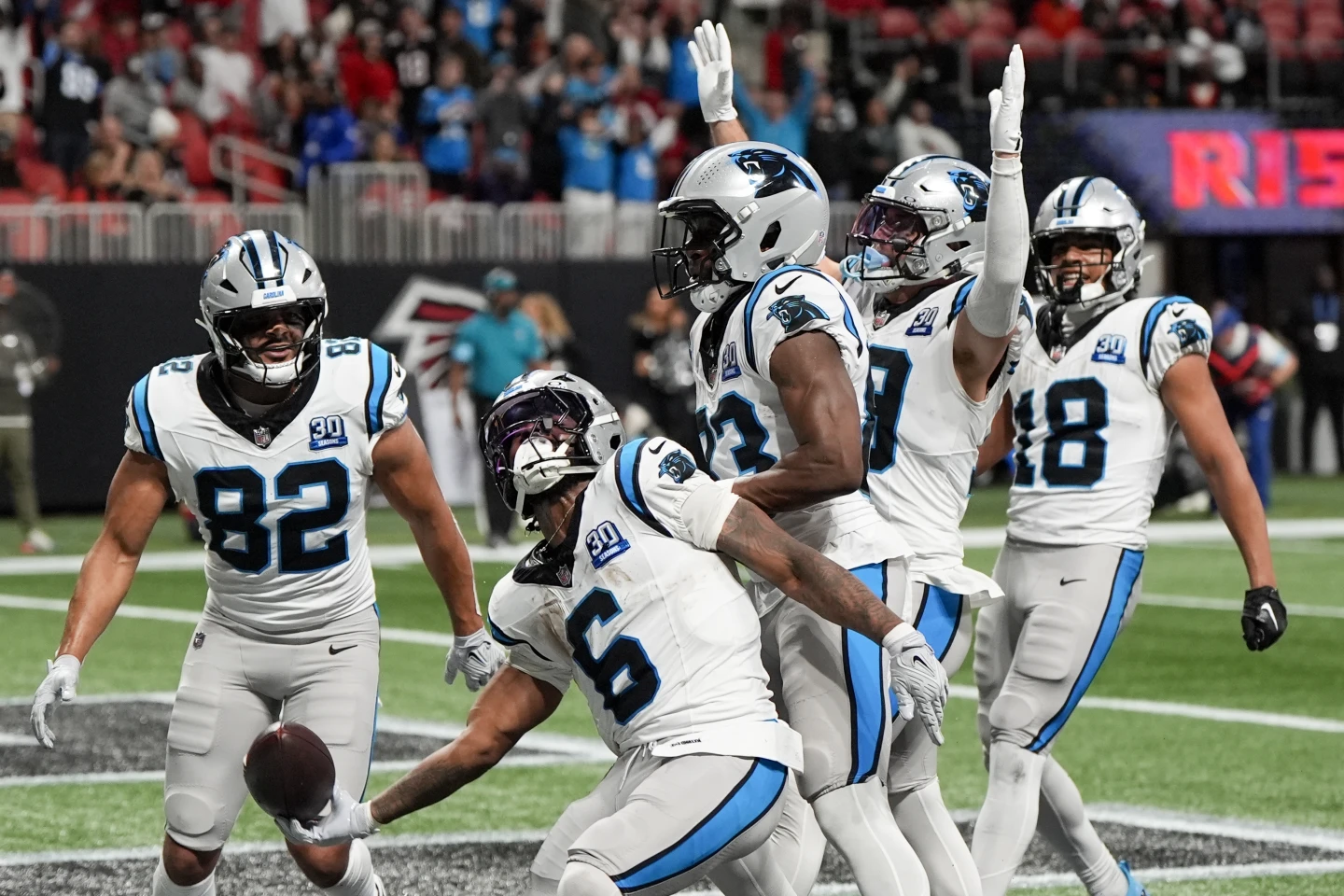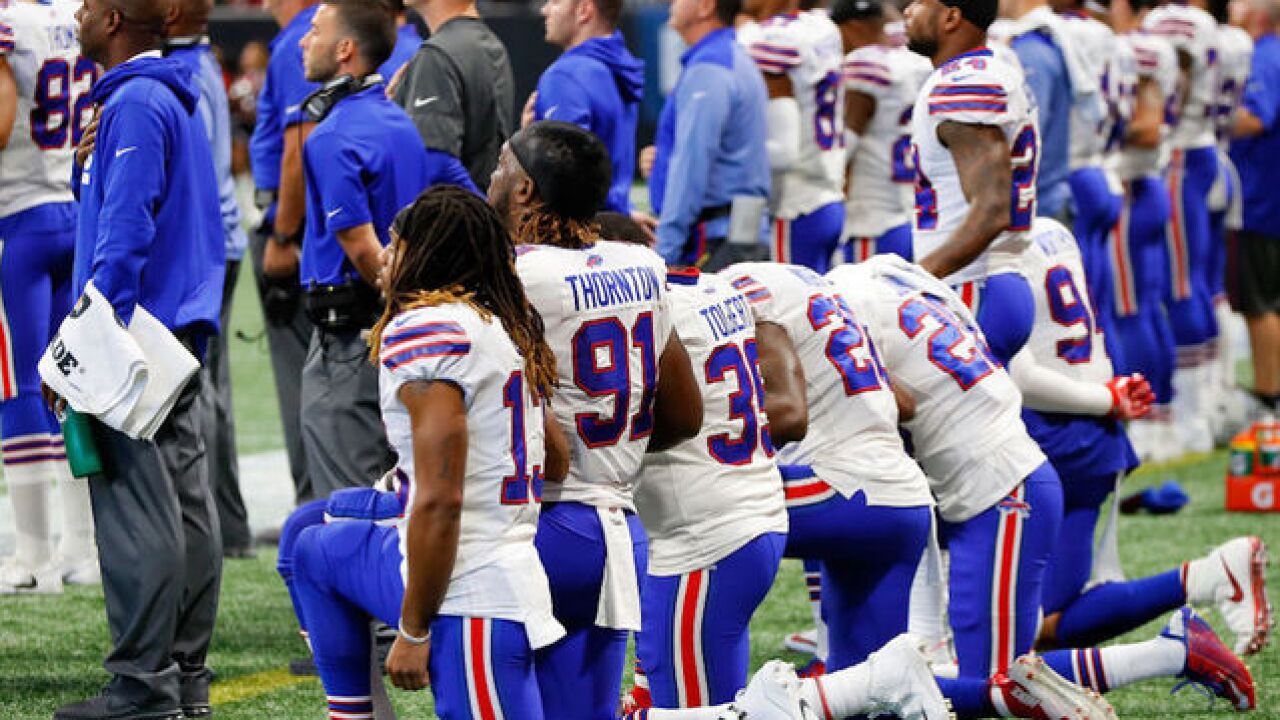The National Football League announced that its owners had reached a “unanimous” decision that “everyone should stand for the national anthem.” While players are allowed to remain in the locker room for private protest, any public display will result in fines for the player’s team.
The policy seems aimed at avoiding controversy that distracts from the game, damages ratings, and hurts profits. However, the announcement sparked a major backlash.
The NFL Players Association expressed doubt, promising to review the policy to see if it violated the collective bargaining agreement and emphasized that kneeling players were acting out of patriotism and good intentions.
Meanwhile, National Review supported the new rules, comparing kneeling to flag-burning: “extreme” and “radical,” even though it is protected by the First Amendment. The White House also praised the decision, with Vice President Pence tweeting that it was a victory for the country and the Trump administration.
While many discussed the move’s consequences and legality, few considered the long history of kneeling as a form of protest. Looking at this history shows that the players are making a thoughtful, moral decision — and that their protest has religious roots.
In 1960, a group of students in Atlanta developed what became known as a kneel-in. At the time, many churches in the South were segregated, with “closed door” policies preventing Black Americans from worshiping with white congregations. These students saw this as an injustice both to racial equality and Christian brotherhood, and they were determined to integrate the city’s white churches.
If allowed, they would enter and worship quietly; if refused, they would kneel and pray in front of the church. “Most of us in the Atlanta student movement have increasingly felt the need to place this problem squarely on the hearts of white Christians,” one student said, “feeling that every church, if it is truly Christian, by its very presence extends in the Savior’s name the unspoken invitation: ‘Whoever will, let him come.’”
These kneel-ins spread beyond Atlanta to cities and small towns. The Student Nonviolent Coordinating Committee called kneel-ins “one of the next important phases of the student movement,” similar to sit-ins, wade-ins, and stand-ins that were taking place throughout the South.
However, kneel-ins were different from sit-ins or marches. They were an appeal to conscience, done in a posture of faith. Knees bent and heads bowed, the protest was not physical but moral. By 1967, a journalist described the kneel-ins as “one of the most curious spectacles produced by the most profound domestic moral crisis of our time.”

The students who knelt before segregated churches did not do so out of hatred for them. In fact, their protest was driven by love. “I approached,” one of the students said, “not as a demonstrator, but as a believer in an eternal, common Cause.” Their goal wasn’t simply to push for legal change but to appeal to the Christian faith that they shared with the clergy and churchgoers, asking them to see that segregation was un-Christian.
Despite their peaceful protest, the students faced strong opposition. Many supporters of segregation defended the right of individual churches to maintain segregationist policies. Others criticized the kneel-ins as political stunts, claiming they polluted sacred spaces. Some even denied the protesters’ sincerity, calling them “just a bunch of agitators,” as one person in Georgia put it.
According to historian Carolyn Dupont, “the moral theater [that] played out on these church steps worked no conversion on their racial attitudes.” Change didn’t happen immediately. Over time, many churches eventually abandoned policies of racial exclusion, though some did so reluctantly or after conflict. Many churches, however, avoided confronting the deeper theological and moral questions the protesters had hoped to raise.
Nearly 60 years later, long after the Civil Rights Act and the Voting Rights Act, kneeling continues to question people’s conscience in its quiet way. Many NFL players kneel not out of disrespect for servicemen and women or hatred for the country, but out of love for America.
As President Barack Obama once said, dissent in pursuit of a better union can be “one of the truest expressions of patriotism.” Love for the country, like love for the church, sometimes calls for kneeling.
The act of kneeling is also significant. While the raised fist of black power symbolizes defiance, kneeling expresses a patient, almost religious form of protest — a call to our better nature.
Kneeling is an act of humility and respect. It asks questions about when racial equality will be achieved, when America will live up to its promise of liberty and justice for all, and when a beloved community will emerge. These are the deeper questions for NFL Commissioner Roger Goodell, for Vice President Pence, and for all Americans.
